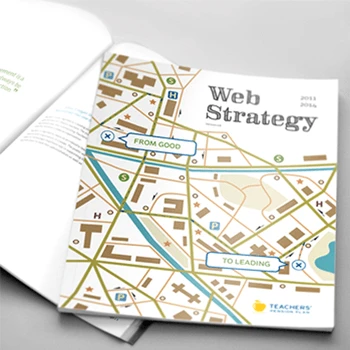What exactly is ethnographic UX research and how does it differ from other UX methods?
Ethnographic UX research involves immersing researchers into users' natural environments to observe firsthand how they interact with products and services. Unlike interviews or surveys that rely on what users say, ethnographic research captures what users actually do in their real-world contexts. This method reveals tacit and unarticulated behaviors that users might not be consciously aware of or able to express in traditional research settings.
Tip: Consider ethnographic research when you need to understand complex workflows, identify gaps between stated and actual behavior, or design innovative products for unfamiliar user environments.
When should we choose ethnographic research over other UX research methods?
Ethnographic research is most valuable when context is crucial to understanding user behavior. Choose it for complex B2B software, innovative products without existing user patterns, or when you need to understand environmental factors affecting product use. It's particularly effective for redesigning existing workflows, understanding multi-user scenarios, or when traditional research methods haven't provided sufficient insights into user needs.
Tip: Use ethnographic research when you're asking 'how do users really work?' rather than 'what do users think?' - it's about observing actual behavior in natural settings.
What's the difference between ethnographic observation and contextual inquiry?
Ethnographic observation involves watching users in their natural environment, either as a 'fly-on-the-wall' or through active participation. Contextual inquiry combines observation with real-time interviews using a master-apprentice model where users explain their actions as they work. Ethnographic observation provides unbiased behavioral data, while contextual inquiry adds immediate user explanations and can be more focused and time-efficient.
Tip: Choose pure ethnographic observation when you want to minimize researcher influence, and contextual inquiry when you need to understand the reasoning behind user actions.
How long does ethnographic research typically take?
Ethnographic research timelines vary based on study complexity and depth required. Basic contextual inquiry sessions can be completed in 1-2 weeks, while comprehensive ethnographic studies may take 4-8 weeks including planning, field work, and analysis. The field observation phase itself typically ranges from several days to a few weeks, depending on the scope of user behaviors being studied.
Tip: Factor in additional time for participant recruitment and access permissions, especially for B2B environments where security clearances or organizational approvals may be required.
What makes ethnographic research particularly valuable for B2B products?
B2B environments often involve complex workflows, multiple stakeholders, and organizational constraints that significantly impact product use. Ethnographic research reveals how products fit into actual work processes, uncovers collaboration patterns, and identifies environmental factors that affect usage. It's invaluable for understanding enterprise software adoption, workflow integration, and the social dynamics of workplace technology use.
Tip: In B2B contexts, ethnographic research can reveal the difference between official processes and actual workarounds, which is crucial for product design success.
How do you ensure ethnographic research provides actionable insights?
We structure ethnographic research around specific business questions and user experience challenges. Our analysis framework connects observed behaviors to design opportunities and business outcomes. We focus on identifying patterns across multiple users and contexts, translating behavioral insights into specific product requirements and design recommendations. All findings are presented with clear implications for product development and user experience improvement.
Tip: Define clear research questions upfront that directly connect to product decisions you need to make - this ensures observations translate into actionable insights.
What are the main limitations of ethnographic research?
Ethnographic research typically involves smaller sample sizes due to the intensive nature of field observation. It can be more time-consuming and costly than other methods. The presence of researchers may initially influence user behavior, and some work environments may have access restrictions. Additionally, ethnographic research requires skilled researchers who can identify meaningful patterns and translate observations into design insights.
Tip: Consider ethnographic research as providing deep insights into user behavior patterns rather than statistically representative data - combine with other methods for broader validation.
How do you plan and structure an ethnographic research study?
We begin with discovery workshops to understand your research objectives, user types, and business context. We then develop a research protocol that includes participant profiles, observation methods, data collection approaches, and analysis frameworks. Our planning considers access requirements, ethical considerations, and the specific environments where users work. We create structured observation guides while maintaining flexibility for emergent insights.
Tip: Invest time in thorough planning - the quality of ethnographic research depends heavily on proper preparation and clear research objectives.
What participant recruitment challenges exist for ethnographic research?
Ethnographic research requires participants who are willing to have researchers observe their actual work environments and processes. This can be challenging in sensitive industries, competitive environments, or when proprietary information is involved. We work closely with your team to identify appropriate participants, manage confidentiality concerns, and obtain necessary permissions for workplace observation.
Tip: Start recruitment early and work with internal stakeholders to identify participants who are both representative of your user base and comfortable with observation.
How do you handle confidentiality and privacy concerns in workplace ethnography?
We implement strict confidentiality protocols including non-disclosure agreements, secure data handling procedures, and anonymization of all research materials. We work with your legal and compliance teams to ensure all observations meet organizational requirements. Participants have control over what aspects of their work can be observed, and we obtain explicit consent for all data collection activities.
Tip: Address confidentiality concerns proactively by involving legal and compliance teams in research planning and ensuring all stakeholders understand data protection measures.
What access and permissions are needed for ethnographic research?
Access requirements vary by industry and organization. We may need security clearances, visitor permissions, or special authorizations to observe in certain environments. For healthcare, finance, or government contexts, additional compliance requirements may apply. We work with your team to understand and fulfill all access requirements before beginning field work.
Tip: Map out all required permissions and approvals early in the planning process - delays in access can significantly impact research timelines.
How do you minimize the observer effect in ethnographic research?
We use several strategies to reduce the impact of researcher presence on user behavior. These include spending time acclimating participants to the researcher's presence, using unobtrusive observation techniques, and focusing on natural work tasks rather than artificial scenarios. Our researchers are trained to blend into the environment while maintaining professional observation standards.
Tip: Plan for an initial acclimatization period where participants can become comfortable with the researcher's presence before formal observation begins.
What equipment and tools do you use for ethnographic research?
Our toolkit includes video cameras, audio recorders, mobile observation devices, and digital note-taking systems. We adapt our equipment to the specific environment and participant comfort levels. In sensitive environments, we may rely primarily on written observations. We also use specialized software for organizing and analyzing ethnographic data, including video analysis tools and pattern recognition systems.
Tip: Discuss equipment requirements upfront to ensure all recording devices and methods are acceptable in your organizational environment.
How do you adapt ethnographic methods for remote or distributed teams?
Remote ethnographic research uses digital observation methods including screen sharing, video calls, and digital shadowing techniques. We observe users in their home office environments and capture how they interact with tools and colleagues in distributed settings. This approach reveals unique challenges of remote work and distributed collaboration that affect product design.
Tip: Remote ethnographic research can reveal different user behaviors than in-office observation - consider the specific work context you're designing for.
What does a typical ethnographic observation session look like?
A typical session involves observing users performing their normal work activities while the researcher documents behaviors, interactions, and environmental factors. Sessions can last from several hours to multiple days, depending on the complexity of workflows being studied. We observe both individual tasks and collaborative activities, noting workarounds, frustrations, and successful practices. The researcher maintains detailed field notes and may capture audio or video with permission.
Tip: Prepare participants by explaining that they should work normally rather than trying to demonstrate 'best practices' - authentic behavior provides the most valuable insights.
How do you capture and document ethnographic observations?
We use structured observation frameworks that capture behaviors, contexts, interactions, and environmental factors. Our documentation includes detailed field notes, photographs, video recordings (when permitted), and audio recordings of user explanations. We also create process maps and workflow diagrams during observation. All data is organized using systematic coding and analysis frameworks to identify patterns and insights.
Tip: Ask to see examples of documentation methods to ensure the level of detail matches your needs for actionable insights.
What types of behaviors and insights do you look for during observation?
We focus on workflow patterns, workarounds, communication methods, tool usage, environmental constraints, and emotional responses. We observe how users adapt to limitations, collaborate with others, and integrate various tools into their work processes. Key insights include efficiency bottlenecks, unmet needs, successful practices, and contextual factors that influence product adoption and usage.
Tip: Share your specific design challenges with the research team so they can focus observation on behaviors most relevant to your product decisions.
How do you handle unexpected discoveries during field research?
Ethnographic research often reveals unexpected user behaviors or needs that weren't anticipated in initial planning. We maintain flexibility in our observation protocols to explore emergent themes while staying focused on core research objectives. When significant unexpected patterns emerge, we discuss with your team whether to extend observation or adjust focus areas to capture these insights.
Tip: Build flexibility into your research scope and timeline to accommodate unexpected but valuable discoveries that could significantly impact your product strategy.
What challenges do researchers face in different industry environments?
Different industries present unique challenges for ethnographic research. Healthcare environments require strict privacy compliance and may limit observation access. Financial services have security restrictions and confidentiality requirements. Manufacturing environments involve safety considerations and operational constraints. We adapt our methods to each industry's specific requirements while maintaining research quality.
Tip: Choose research partners with experience in your industry who understand the specific constraints and opportunities of your work environment.
How do you manage participant fatigue during extended observation periods?
Extended observation can be tiring for participants who aren't accustomed to having their work observed. We break observation into manageable segments, provide clear explanations of what we're doing and why, and maintain respectful distance when possible. We also adjust our presence based on participant comfort levels and the nature of their work tasks.
Tip: Prepare participants for the observation process and maintain open communication about their comfort levels throughout the research period.
What's your approach to observing collaborative work and team dynamics?
Collaborative work observation requires understanding group dynamics, communication patterns, and shared tool usage. We observe meetings, collaborative sessions, and informal interactions to understand how teams work together with your product. This includes documenting role differences, communication flows, and how collaborative processes affect individual product usage.
Tip: If your product involves team collaboration, ensure the research includes observation of group work scenarios, not just individual usage patterns.
How do you analyze ethnographic data to identify meaningful patterns?
We use structured analysis frameworks to review all observation data and identify recurring themes, behaviors, and environmental factors. Our analysis includes behavioral coding, pattern recognition, and cross-case comparison to identify insights that apply broadly versus specific contexts. We create user journey maps, process flows, and behavioral models that translate observations into design-relevant insights.
Tip: Ask to see examples of how raw observations are transformed into actionable insights to ensure the analysis approach matches your decision-making needs.
What deliverables do you provide from ethnographic research?
Our deliverables include comprehensive research reports with behavioral insights, user journey maps, process diagrams, and design recommendations. We create persona profiles based on observed behaviors, environmental context documentation, and video highlights that bring insights to life. All deliverables are designed to be shared across your organization and referenced throughout product development.
Tip: Specify deliverable formats that work best for your team's workflow - some organizations prefer detailed reports while others need presentation-ready summaries.
How do you connect ethnographic insights to specific design recommendations?
We translate behavioral observations into specific product requirements and design opportunities. Our recommendations connect observed user needs to interface design, workflow optimization, and feature development. We prioritize recommendations based on frequency of observed behaviors, impact on user experience, and alignment with business objectives. Each recommendation includes the supporting observational evidence.
Tip: Ensure the research team understands your product development process so recommendations can be integrated effectively into your design and development workflow.
What's your approach to handling conflicting observations across different users?
Conflicting observations often reveal important differences in user types, contexts, or organizational cultures. We analyze conflicts to understand whether they represent different user segments, environmental variations, or evolving practices. Rather than averaging out differences, we identify what drives different behaviors and how product design can accommodate various user needs.
Tip: Don't expect all users to behave identically - conflicting observations often reveal the need for flexible design solutions that work across different contexts.
How do you validate ethnographic findings?
We validate findings through multiple observation sessions, cross-researcher analysis, and participant feedback sessions. We also triangulate ethnographic insights with other research methods like interviews or surveys when appropriate. Our validation process ensures that observed behaviors represent genuine patterns rather than isolated incidents or researcher bias.
Tip: Ask about validation methods to ensure findings are based on genuine patterns rather than single observations or researcher interpretation.
What role do photos and videos play in ethnographic research deliverables?
Visual documentation helps bring ethnographic insights to life and provides compelling evidence for design decisions. We use photos and videos to illustrate key behaviors, environmental factors, and user workflows. Visual materials help stakeholders understand user contexts and build empathy for user experiences. All visual content is anonymized and used with explicit participant consent.
Tip: Visual documentation can be powerful for gaining stakeholder buy-in, but ensure your organization's privacy policies allow for photographic documentation.
How do you ensure ethnographic insights remain relevant over time?
We document the temporal context of observations and consider how user behaviors might evolve. Our recommendations include guidance on which insights are likely to remain stable versus those that might change as technology or work practices evolve. We also provide frameworks for updating insights based on ongoing user feedback and changing business contexts.
Tip: Consider ethnographic research as providing a baseline understanding that should be updated periodically as user practices and technology evolve.
How do ethnographic insights influence product design decisions?
Ethnographic insights provide deep understanding of user contexts, workflows, and needs that directly inform design decisions. They reveal environmental constraints, collaborative patterns, and task sequences that must be considered in product design. Insights influence feature prioritization, interface design, workflow optimization, and integration requirements. They help create products that fit naturally into users' existing work practices.
Tip: Share your current design challenges with the research team so they can focus on observations that will most directly impact your product decisions.
What's the ROI of ethnographic research for product development?
Ethnographic research ROI comes from preventing costly design mistakes, reducing development iterations, and creating products that better meet user needs. By understanding real user contexts early, teams avoid building features that don't fit actual workflows. The research often reveals opportunities for innovation and differentiation that wouldn't emerge from other research methods.
Tip: Measure ROI by tracking reduced design iterations, faster user adoption, and decreased support costs after implementing ethnography-informed design changes.
How do you help teams implement ethnographic research findings?
We work with your design and development teams to translate insights into specific implementation guidance. This includes creating user stories, design requirements, and workflow specifications based on observed behaviors. We provide ongoing consultation during implementation to ensure design decisions align with ethnographic insights. Our goal is to make research findings actionable and integrated into your development process.
Tip: Ensure the research team can provide ongoing support during implementation, not just deliver findings and disappear.
What challenges do teams face when implementing ethnographic insights?
Common challenges include translating complex behavioral insights into specific design requirements, balancing different user needs observed across various contexts, and convincing stakeholders to prioritize user-centered design changes. Teams may also struggle with the resource implications of addressing all identified user needs. We help prioritize insights based on impact and feasibility.
Tip: Plan for implementation challenges by building consensus around research findings and establishing clear priorities for acting on insights.
How do you measure the success of ethnographically-informed design changes?
Success measures include improved user task completion rates, reduced time-to-complete workflows, decreased user errors, and increased user satisfaction with the product. We establish baseline metrics before design changes and track improvements after implementation. Success also includes qualitative measures like improved user confidence and reduced need for workarounds.
Tip: Establish success metrics that directly relate to the behavioral insights discovered during ethnographic research.
Can ethnographic research help with product innovation and new feature development?
Yes, ethnographic research is particularly valuable for innovation because it reveals unmet needs and identifies opportunities that users might not be able to articulate. By observing actual work practices, we identify gaps in current solutions and opportunities for new features or entirely new products. The research often reveals innovative approaches that users have developed as workarounds.
Tip: Use ethnographic research early in the innovation process to identify opportunities that might not emerge from traditional market research or user interviews.
How does ethnographic research support business case development?
Ethnographic research provides compelling evidence for business cases by documenting real user problems and quantifying the impact of workflow inefficiencies. The research reveals costs associated with current user workarounds, time spent on inefficient processes, and opportunities for productivity improvements. This evidence helps justify product development investments and prioritize features based on user impact.
Tip: Ask the research team to quantify workflow inefficiencies and time costs where possible to strengthen business cases for design improvements.
How do you manage ethnographic research projects within our development timeline?
We structure ethnographic research to fit your development timeline while maintaining research quality. For tight timelines, we use focused contextual inquiry sessions rather than extended observation periods. We provide preliminary insights during the research process and final deliverables aligned with your design decision points. Our flexible approach adapts to agile development cycles.
Tip: Communicate your development timeline constraints upfront so the research approach can be tailored to provide timely insights when you need them.
What's your approach to stakeholder communication during ethnographic research?
We maintain regular communication with stakeholders throughout the research process, providing updates on progress, preliminary findings, and any significant discoveries. We schedule check-ins to discuss emerging insights and ensure research remains aligned with business objectives. Key stakeholders can observe research sessions when appropriate and feasible.
Tip: Establish clear communication expectations and update frequency that works for your team's workflow and decision-making processes.
How do you handle scope changes during ethnographic research?
Ethnographic research often reveals unexpected insights that may suggest scope adjustments. We discuss emerging findings with your team and provide recommendations for scope modifications when they would significantly benefit the research outcomes. We manage scope changes through clear communication about implications for timeline and deliverables.
Tip: Build some flexibility into your research scope to accommodate valuable unexpected discoveries while maintaining focus on core research objectives.
What team members from our organization should be involved in ethnographic research?
Key team members include product managers, UX designers, and anyone responsible for user experience decisions. Subject matter experts can provide context for observations, while development team members can understand implementation implications. We recommend involving stakeholders who can act on research findings and have authority to make design decisions.
Tip: Include team members who have decision-making authority to ensure research findings can be implemented effectively.
How do you ensure research quality with different team members and researchers?
We maintain research quality through standardized observation protocols, researcher training, and systematic analysis procedures. Multiple researchers may observe the same users to ensure consistency, and all analysis is reviewed by senior researchers. We use structured frameworks to minimize individual researcher bias and ensure reliable insights.
Tip: Ask about quality assurance processes and researcher qualifications to ensure consistent, reliable research outcomes.
What ongoing support do you provide after ethnographic research completion?
We provide ongoing consultation during the implementation of research findings, including clarification of insights, guidance on design decisions, and support for communicating findings to broader stakeholders. We can also conduct follow-up research to validate design changes or explore additional questions that emerge during implementation.
Tip: Consider the value of ongoing research partnerships for continued user understanding as your product evolves.
How do you handle intellectual property and confidentiality concerns?
We implement strict confidentiality protocols including comprehensive non-disclosure agreements, secure data storage, and limited access to sensitive information. All research materials are anonymized and stored according to your organization's security requirements. We can work within your existing IP protection frameworks and security policies.
Tip: Discuss IP and confidentiality requirements early in the engagement to ensure all security and legal requirements are met.
How does ethnographic research compare to other UX research methods in terms of value?
Ethnographic research provides unique value through deep contextual understanding that other methods can't match. While surveys and interviews reveal what users say, ethnographic research shows what they actually do. It uncovers tacit knowledge and environmental factors that significantly impact user experience but might not emerge in other research methods. The investment in ethnographic research pays off through more accurate user understanding.
Tip: Consider ethnographic research as foundational research that informs other UX methods rather than replacing them entirely.
What evidence do you have that ethnographic research improves product outcomes?
Our ethnographic research has led to significant improvements in user adoption, task completion rates, and user satisfaction across various projects. We have case studies showing reduced support costs, faster user onboarding, and improved workflow efficiency after implementing ethnographically-informed design changes. The research consistently reveals insights that wouldn't emerge from other methods.
Tip: Ask for specific case studies and metrics that demonstrate the impact of ethnographic research on products similar to yours.
How do you demonstrate the business value of ethnographic research to skeptical stakeholders?
We demonstrate value through concrete examples of problems identified and solutions developed from ethnographic insights. We quantify the cost of current user workarounds, time wasted on inefficient processes, and potential productivity improvements. We also show how ethnographic research prevents costly design mistakes by revealing user needs that weren't apparent through other methods.
Tip: Frame ethnographic research value in terms of risk mitigation and opportunity identification rather than just user satisfaction improvement.
What's the long-term value of ethnographic research for product strategy?
Ethnographic research provides foundational user understanding that influences product strategy over time. The deep contextual knowledge gained helps predict how users will respond to new features, identify market opportunities, and guide product evolution. This understanding becomes increasingly valuable as products mature and user needs become more sophisticated.
Tip: Consider ethnographic research as building organizational knowledge about users that will inform multiple product decisions over time.
How does ethnographic research support competitive advantage?
Ethnographic research reveals unique insights about user needs and contexts that competitors using only traditional research methods might miss. This deeper understanding enables more innovative solutions and better product-market fit. Companies that invest in ethnographic research often identify opportunities for differentiation that aren't apparent through surface-level user research.
Tip: Use ethnographic research to identify unmet needs and innovation opportunities that can differentiate your product from competitors.
What should we expect as realistic outcomes from ethnographic research?
Realistic outcomes include clearer understanding of user workflows, identification of previously unknown user needs, discovery of workflow inefficiencies, and insights into environmental factors affecting product use. You should expect specific, actionable recommendations for product improvements and a deeper understanding of how your product fits into users' broader work contexts.
Tip: Set expectations for specific, actionable insights rather than general user satisfaction improvements - ethnographic research excels at revealing concrete behavioral patterns.
How do you ensure ethnographic research investment delivers measurable returns?
We ensure ROI by connecting research insights directly to design decisions and business outcomes. We track metrics like reduced development iterations, improved user adoption rates, and decreased support costs. We also measure qualitative improvements like increased user confidence and reduced need for training. Our approach focuses on actionable insights that drive measurable improvements.
Tip: Establish clear success metrics before beginning research and track them after implementing ethnographically-informed design changes.












